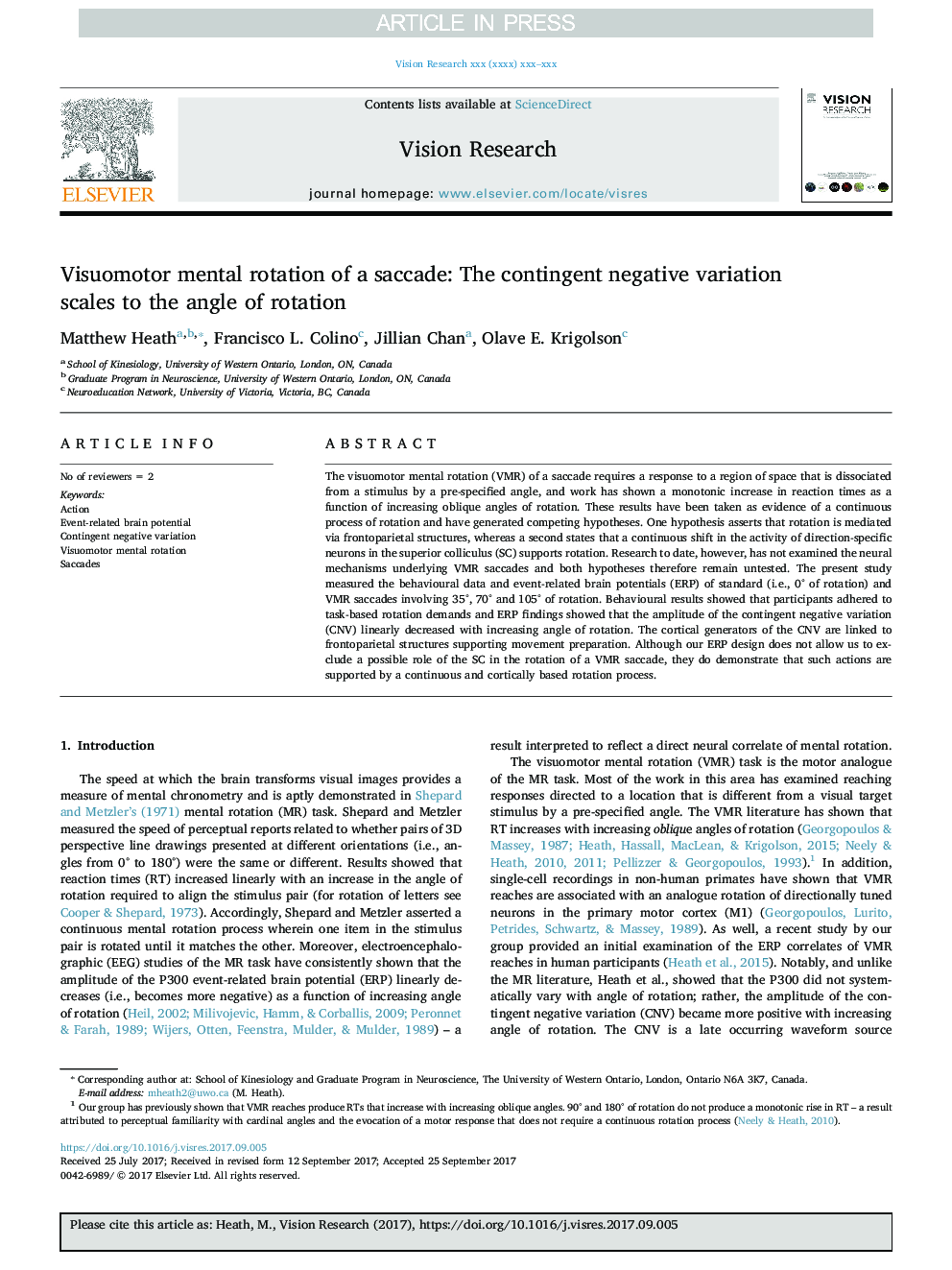| Article ID | Journal | Published Year | Pages | File Type |
|---|---|---|---|---|
| 8795330 | Vision Research | 2018 | 7 Pages |
Abstract
The visuomotor mental rotation (VMR) of a saccade requires a response to a region of space that is dissociated from a stimulus by a pre-specified angle, and work has shown a monotonic increase in reaction times as a function of increasing oblique angles of rotation. These results have been taken as evidence of a continuous process of rotation and have generated competing hypotheses. One hypothesis asserts that rotation is mediated via frontoparietal structures, whereas a second states that a continuous shift in the activity of direction-specific neurons in the superior colliculus (SC) supports rotation. Research to date, however, has not examined the neural mechanisms underlying VMR saccades and both hypotheses therefore remain untested. The present study measured the behavioural data and event-related brain potentials (ERP) of standard (i.e., 0° of rotation) and VMR saccades involving 35°, 70° and 105° of rotation. Behavioural results showed that participants adhered to task-based rotation demands and ERP findings showed that the amplitude of the contingent negative variation (CNV) linearly decreased with increasing angle of rotation. The cortical generators of the CNV are linked to frontoparietal structures supporting movement preparation. Although our ERP design does not allow us to exclude a possible role of the SC in the rotation of a VMR saccade, they do demonstrate that such actions are supported by a continuous and cortically based rotation process.
Keywords
Related Topics
Life Sciences
Neuroscience
Sensory Systems
Authors
Matthew Heath, Francisco L. Colino, Jillian Chan, Olave E. Krigolson,
